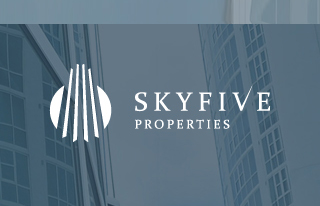Categories
Choose Language





Popular Posts
[mashshare url="http://www.skyfiveproperties.com/blog/real-estate-investors-guide-determining-property-value"]A Real Estate Investor’s Guide To Determining Property Value
Would you like to buy a property with a good cap rate? The real estate industry is quite broad, with the main operations being selling and buying. As a real estate investor, you aim to profit from your investments. Should you decide to sell your property, you want to get more than you paid for initially. If you’re looking to buy, you want the best deal—you shouldn’t pay more than necessary for the property.
According to an Orlando property management company, one way to get the most from your real estate property, whether buying or selling, is to determine the property’s value. It depicts the economic value of the property and will also help you determine the property tax and insurance to pay. But how do you determine property value? This article gives various ways to get this value.
Determine property value in the following ways:
Income Approach
As the name suggests, this technique helps you to arrive at the property value by determining the amount of income it will or should give you. Property management providers will often adopt this approach to determine the value of commercial properties.
You need to identify the effective gross income of the property. It depicts the income you’ll get, factoring in possible vacancies. It’s the opposite of gross potential income, which is the income you expect with full occupancy of your property.
Besides the effective gross income, you’ll also need the estimated property expenses. These expenses should include fixed costs like mortgage payments and taxes and variable costs like management and utilities. These two figures will help you determine the net operating income (NOI). The NOI is the effective gross income minus the estimated expenses.
Next, you need to determine the cap rate, which is the expected rate of return of the property as a percentage. You’ll get this rate by looking at the market value of recent sales of similar properties.
With the NOI and cap rate, proceed to get the property value by dividing the NOI by the cap rate.
Sales Comparison Approach
With this approach, you’ll compare the prices at which similar properties are selling. It’s a common technique used when determining the value of a residential property. However, you can only use this approach if you have a similar property to compare to. Similarity means they should be in the same neighborhood, operate under similar zoning regulations, and have the same square footage and the number of rooms, including the year it was built.
Since properties can differ in amenities, you should find out the value addition of a specific amenity. For instance, assume the properties you’re comparing have similar features. However, the property you want to value has a steam room. Find out by what percentage a steam room adds to a property’s value and add it to your figure accordingly.
Cost Approach
The cost approach is ideal when you want to find the value of a property with no similar structures to compare to. It’s likely the case with government buildings and libraries, among others.
Here, you’ll find the property’s value by determining how much it’d cost to build a similar property today. You’ll need a few figures—the land cost, the property’s square footage, the cost per square footage, and the depreciation.
For the land cost, find out how much similar land costs today, with similar properties like water table level and soil type. The property’s square footage and price per footage will help determine the property replacement cost. Depreciation refers to a loss in the value of the property over time. Be sure to look at physical, functional, and economic depreciation.
Physical depreciation refers to the wear and tear of the property, functional depreciation represents the change in preference and taste, and economic depreciation refers to external negative trends like a recession.
To get the property’s value, add the land cost and property replacement costs, then subtract the property’s depreciation.
Fair Market Value
The fair market value is quite a simple approach, which heavily relies on the agreement between the buyer and the seller. The buyer will offer a given price for the property, all factors considered. These factors relate to property features that increase the property’s value like insulation. The seller will then accept the price, with negotiations where needed.
Conclusion
A property’s value is an important figure in the real estate industry. It makes work easier by ensuring all stakeholders in a property sale get a fair deal when transacting business. This discussion has made the process easier by giving a guide in determining property value. Be sure to use this guide as a real estate investor.
It’s important to know that not all approaches will work in any situation. As seen, the income approach is best for commercial property, the sales comparison for residential property, and the cost approach for unique real estate property. Choose accordingly based on your needs.
[mashshare]
Popular Posts:

Kaya Wittenburg
Kaya Wittenburg is the Founder and CEO of Sky Five Properties. Since the age of 10, real estate has been deeply ingrained into his thoughts. With world-class negotiation and deal-making skills, he brings a highly impactful presence into every transaction that he touches.
He is here to help you use real estate as a vehicle to develop your own personal empire and feel deeply satisfied along the way. If you have an interest in buying, selling or renting property in South Florida, contact Kaya today.










